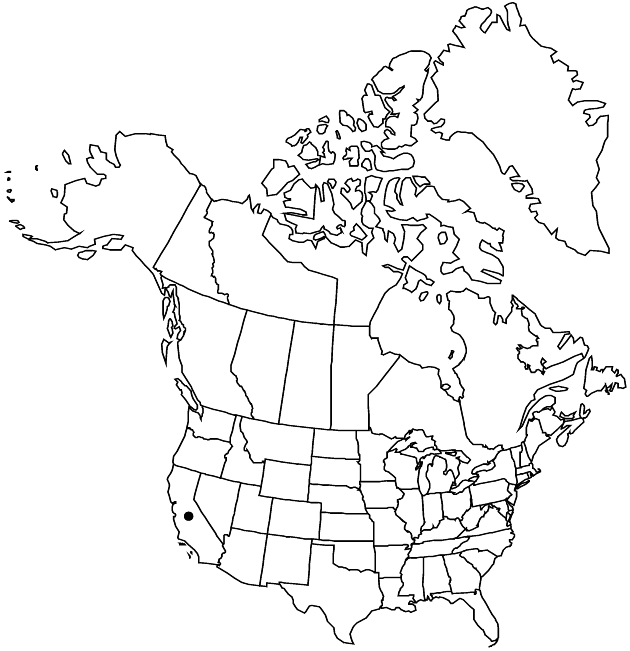Stephanomeria exigua subsp. carotifera
Madroño 21: 472. 1972.
Heads in paniculiform arrays. Peduncles 10–25 mm, glabrous or puberulent. Calyculi of reflexed bractlets. Involucres glabrous or puberulent. Florets 7–9. Cypselae 3.2–4.3 mm; pappi of 18–24 bristles (falling and wholly plumose, or widened bases persistent, bases connate in groups of 2–4, and bristles plumose to tops of bases). 2n = 16.
Phenology: Flowering Aug–Oct.
Habitat: Open, sandy and shale soils inland, sand dunes or serpentine near coast
Elevation: 0–1000 m
Discussion
Subspecies carotifera was originally described as a species because its large taproot suggested that it is a perennial and because it differs morphologically from perennial species of the genus. My field and greenhouse studies showed it to be an obligate annual and to have taproots no larger than those of large specimens of other annual stephanomerias. When it was first described, the morphologic characteristics of the annuals were not understood and, consequently, its relationships were not evident. In morphologic features, karyotype, and reproductive compatibilities, subsp. carotifera is closely allied to the other subspecies of S. exigua. Coastal and inland populations of subsp. carotifera are morphologically distinguishable, particularly in characters of the pappi. The bristles of the pappi of inland populations have widened bases; those of the coastal populations are not widened or only slightly so. Reproductively, the two types are fully compatible. Subspecies carotifera hybridizes naturally with S. exigua subsp. coronaria and with both subspecies of S. virgata (L. D. Gottlieb 1971, 1972).
Selected References
None.
Lower Taxa
"fine" is not a number.
